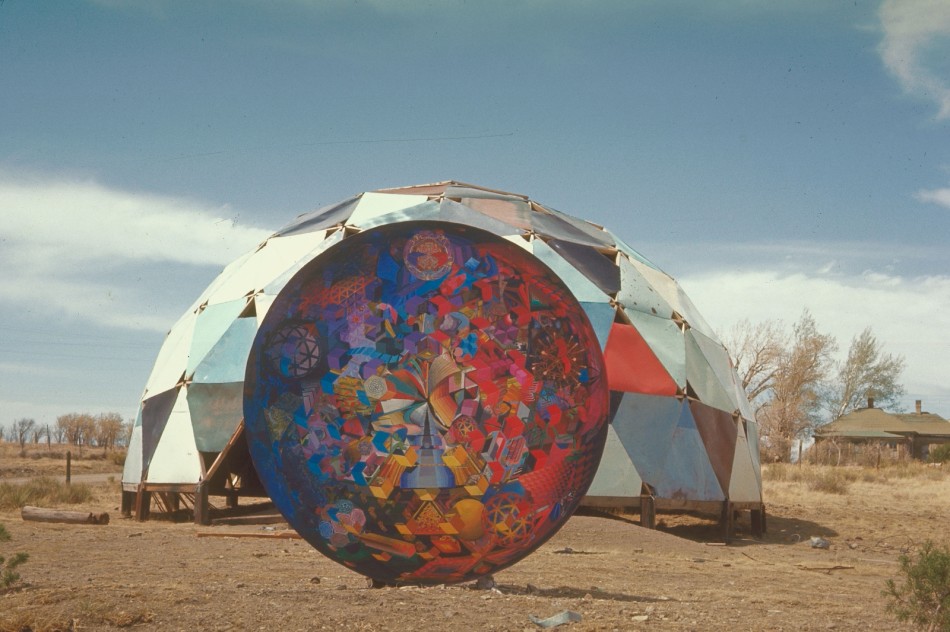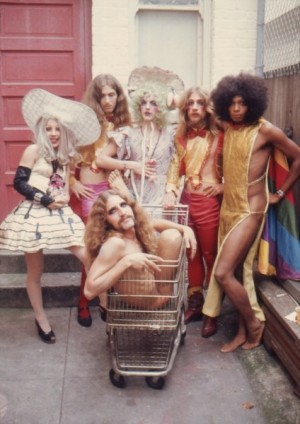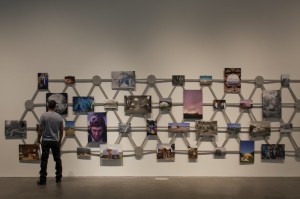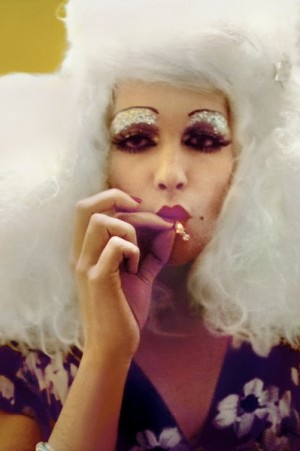
MCA Denver, Exploring the Counterculture (West Coast Style)
The counterculture movement was in essence a western phenomenon. That’s the premise of West of Center: Art and the Counterculture Experiment in America, 1965-1977, a book and exhibition currently on view at the Museum of Contemporary Art in Denver. Yes, significant moments played out at Woodstock and in Greenwich Village, but the American West allowed for (and provided space for), the counterculture to “drop out” and explore how fully art could be integrated into life. Yet this is not an art exhibition in the traditional sense. There are few precious objects here, and those that are on display were never intended or created to be viewed in a museum setting. This is an exhibition of items documenting happenings, performances, lifestyle, experiments. It’s a treasure trove of ephemera from a bygone era, yet one that continues to impact and influence our lives.
Conceived by Adam Lerner and Elissa Auther, the peer reviewed book includes twenty different essays focused on events, happenings and art moments. The twenty were then condensed to eight case studies to create the exhibition on view at MCA. Each element highlights how art was not merely a minor part of the movement. Instead, the exhibition focuses on how the entire counterculture movement was a kind of art. And one that went beyond psychedelic style and design.
Take for instance the Cockettes, founded by George Harris, the preppy blonde in the iconic photograph by Bernie Boston, putting carnations in gun barrels during an antiwar demonstration at the Pentagon in 1967. He was 18 in that photograph and on his way to San Francisco where he changed his name to Hibiscus and came out of the closet. The Cockettes were not merely a gay-themed drag troupe as they are often described, but a group of counterculture individuals both gay and straight who lived theatrically, in costume, performing lavish stage acts for free. Glam rock and contemporary androgyny would not exist if not for the Cockettes. A treasured object on display in this exhibition is a handmade book created by Hibiscus. It’s been carefully photographed by MCA and sits under glass in all it’s sequined glory. It’s the only item George Harris’ mother Ann has of him. Harris died in the early 1980s of complications from AIDS. But he left behind a glamorous legacy. According to Allen Ginsberg, “The Cockettes brought out into the street what was in in the closet, in terms of theatrical dress and imaginative theater.”
An additional form of self-expression and a previously lost work of art from the time period is “The Ultimate Painting.” Collaboratively produced by Drop City founders Gene and JoAnn Bernofsky, Clark Richert, Richard Kallweit and Charles DiJulio, “The Ultimate Painting” was made to spin during multi-media shows in Drop City’s Theater Dome. The large, circular painting, organized according to a five-pointed geodesic framework, reveals different patterns under various frequencies of a strobe light. Mastering the control is half the fun and one can spend many minutes viewing the work and not see all of it’s possibilities. This version was recreated by Clark Richert from a high resolution photograph, as the original was lost after being exhibited at the Brooklyn Museum of Art in 1968/69 as part of “Experiments in Art and Technology” organized by engineer Billy Klüver and artist Robert Rauschenberg.
Also recreated for this exhibition is “Invisible Writing” by The Single Wing Turquoise Bird. Combining slides, films, and strobes with dishes of colored oil and water and other devices for projecting pictures and abstract designs, The Single Wing Turquoise Bird, composed their shows in real time, improvising with acts like The Grateful Dead, Pink Floyd and Janis Joplin. A compilation of art, cinema and visual music, the work has a psychedelic vibe, but is far more than can be categorized within that dimension. “Invisible Writing” was created using current technology, but is very much like what they originally produced. Born from Single Wing Turquoise Bird are music video’s, digital media art and musical, visual, theatrical experiences.
The exhibition stands without the book, which is organized into four central concepts: Communal Encounters; Handmade Worlds; Cultural Politics; and Altered Consciousness. Those of us born in the midst of the counterculture movement (that includes Auther and Lerner) realize that we came to be during a time of positive and futuristic belief. A time when people believed they could change the world and set out to do so. From Ant Farm comes ideas for new technology and connection based on experimental architecture. Dance and movement would not be the same without Anna Halprin. And Emory Douglas, Minister of Culture for the Black Panther Party, encapsulated their goals into a “10 Point Program” of visual clarity. Something lacking in both the current Tea Party and Occupy Wall Street movements.
Auther and Lerner make the case that all of these moments tie together and belong in the canon of art history. Lerner acknowledged that given an unlimited budget they could have also included film, poetry, song and music. “The fluidity of recent contemporary art can be better understood if the legacy of the avant-garde is joined by the tradition of the counterculture,” Auther and Lerner write. “The counterculturalists were actually the most enthusiastic followers of the avant-garde’s call for the integration of art into life.”
Yet I agree with Lucy R. Lippard, who wrote the introduction to the book, that West of Center is lacking a sense of context, “of landscape and place, of western identity and its responses to the counterculture in these accounts.” The exhibition raises more questions than it answers, but that is a good thing. It leaves room for more exploration, research and future exhibitions.
It is clear from this book and exhibition that the counterculture wanted to fuse art, life and politics. Perhaps it was a utopian dream. Yet, it continues to resonate. Issue-oriented arts are making a comeback. We are seeing artists all over the world advocating for political change, for life integration, and for the fusion of all into something more. If we keep trying, perhaps someday we’ll succeed.






This design is wicked! You most certainly know how to keep a reader entertained. Between your wit and your videos, I was almost moved to start my own blog (well, almost…HaHa!) Great job. I really enjoyed what you had to say, and more than that, how you presented it. Too cool!